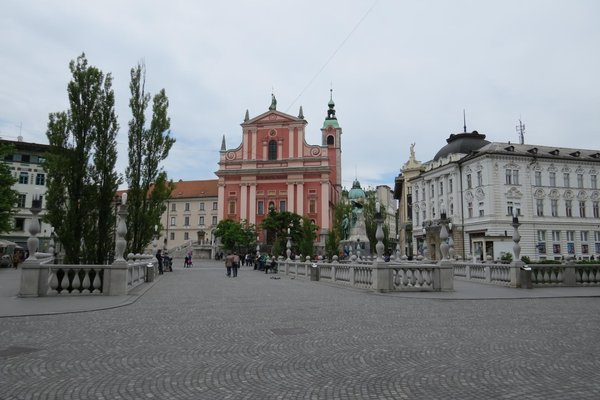Slovenia
Plečnik's Ljubljana
The works of Jože Plečnik in Ljubljana – Human Centred Urban Design represent urban renewal to establish Slovenia as an independent nation.
Plečnik created two axes in the Slovenian capital: a land axis and a water axis. He added new accents such as bridges, squares and parks to the Austro-Hungarian cityscape. These were designed according to modernist principles but with respect for the classical elements.
Community Perspective: while Ljubljana is a pleasant city to visit, expect no single iconic buildings by the hand of Plečnik. Most reviewers see this site only as having regional importance; read Nan’s and Hubert’s reviews for example. Matejicek expresses more support for the architect’s works and Clyde highlights the Ljubljanica River Lock Gate.
Site Info
Official Information
- Full Name
- The works of Jože Plečnik in Ljubljana – Human Centred UrbanDesign (ID: 1643)
- Country
- Slovenia
- Status
-
Inscribed 2021
Site history
History of Plečnik's Ljubljana
- 2021: Inscribed
- Inscribed
- 2018: Revision
- Successor to former TWHS The timeless, humanistic architecture of Jože Plečnik in Ljubljana and Prague (except for Czech parts)
- Type
- Cultural
- Criteria
- iv
Links
- UNESCO
- whc.unesco.org
- Official
-
- visitljubljana.com — Visit Plečniks Ljubljana
All Links
UNESCO.org
- whc.unesco.org — whc.unesco.org/
Official Website
- visitljubljana.com — Visit Plečniks Ljubljana
Community Information
- Community Category
- Urban landscape: Post-medieval European
Travel Information
Trieste hotspot
Recent Connections
-
Perfect Inscriptions
2021 -
Creative Cities
LiteratureSee www.unesco.org
-
Depicted in Mizielinska Maps
Dragon Bridge (Zmajski most)See i.pin…
Connections of Plečnik's Ljubljana
- Geography
-
-
Located in a Capital City
Ljbubljana, capital of Slovenia
-
- Trivia
-
-
Replica in Mini-Europe
The Three Bridges -
Google Doodles
January 23 2012, Joze Plecnik's 140th BirthdaySee doodles.google
-
Dubbed as another WHS
"Slovene architect Jože Plečnik had already worked with notable designers of the era in Vienna and Prague before returning home to rebuild the capital in the 1930s. His plan was inspired by ancient Athens – he even called it "The Slovenian Acropolis"."See www.bbc.com
-
Depicted in Mizielinska Maps
Dragon Bridge (Zmajski most)See i.pinimg.com
-
On Banknotes
The National and University Library featured on the reverse of the 500 tolar banknote (1992-2005).See en.numista.com
-
- History
-
-
Declarations of Independence
Congress Square "has had a highly symbolic role in modern Slovenian history. On October 29, 1918, independence from Austrian-Hungarian rule and the establishment of the State of Slovenes, Croats and Serbs was proclaimed during a mass demonstration on the square." "On June 22, 1988, the first free mass demonstration was held on the square (...). The demonstration marked the beginning of the Slovenian spring which culminated in the declaration of Slovenia's independence on June 25, 1991. Independence was first demanded in the May Declaration (...); the declaration was first publicly read by the poet Tone Pavcek in a demonstration on Congress Square on May 8, 1989.See en.wikipedia.org
-
Congresses and Conferences
Congress Square "was used for ceremonial purposes during the post-Napoleonic Congress of Ljubljana, after which it was named."See en.wikipedia.org
-
- Architecture
-
-
Spolia
"Various materials and elements from nearby structures were employed in the construction of the Gerber passage, including stones left behind when the old Cobblers' Bridge was replaced with a new one, and the iron fence that once lined the central core of the Three Bridges." For the construction of the National Library, "Plecnik had part of the Roman wall removed for the construction, which met with general opposition. He therefore had part of the stones symbolically built into the façade and added several stones left from the demolished Auersperg Palace." (Nomination file, p. 58, 102) -
Designed by Jože Plečnik
The WHS is centered around several of Jože Plečnik's works in Ljubljana. -
Neoclassical architecture
neoclassical Church of St. Francis of Assisi -
Multiple Works of a single architect
Jože Plečnik -
Brick architecture
National and University Library: "The front façade, oriented toward Auersperg Street, was designed as a combination of brick and stone embeddings".See en.wikipedia.org
-
Italian Architects outside Italy
The central bridge of the Triple Bridge was designed by Giovanni Picco, an Italian architect from Villach. (Nomination file, p. 119)See en.wikipedia.org
-
Gesamtkunstwerk
"The palace of the National and University Library has, as a Gesamtkunstwerk, preserved all of the attributes of its design." (Nomination file, p. 172) -
Reinforced Concrete
Reinforced concrete is used for the Cobblers' Bridge. (Nomination file, p. 56)
-
- World Heritage Process
-
-
Perfect Inscriptions
2021 -
Reduced from broader TWHS
"The timeless, humanistic architecture of Jože Plečnik in Ljubljana and Prague": Prague has been left out -
Inscribed on a single criterion only
iv
-
- Religion and Belief
-
-
Franciscan Order
Church of St. Francis of Assisi (Nomination file, p. 129)
-
- Constructions
-
-
Pyramids
Roman Walls in Mirje: "The central dominant and the most important wall element is the Murnikova Street passage with the step pyramid inspired by the pyramid of Cestius in Rome and the Roman catacombs along Via Appia. The barrel-vaulted pyramid is made of massive ashlars, older architectural elements and concrete blocks that were concrete samples left behind in the nearby research institute. On top of the pyramid stands a small, round stone pillar. (Nomination file, p. 50) -
Loggia
Plecnik's Market: "In terms of typology, the Market consists of a pavilion, a pillared loggia, a stoa and a temple." (Nomination file, p. 64) -
Cemeteries
Žale Central CemeterySee en.wikipedia.org
-
Notable Bridges
the Cobblers’ Bridge and the Three Bridges, both designed by Plecnik -
Bandstand
Biedermeier bandstand on Congress SquareSee en.wikipedia.org
-
Bazaars and Market Halls
Plecnik's Market (Nomination file, p. 64-67) -
Monumental Columns
The "Illyrian Column standing at the southern end of French Revolution Square. The column is composed of 1 x 1 m stone blocks symbolizing the transition to the standard decimal measuring system put in place during the French occupation and time of the Illyrian Provinces. It is adorned with various statues and bears inscriptions in old Slovenian and French language commemorating the historic moment when Ljubljana became a capital for the first time ever." (Nomination file, p. 40)
-
- WHS on Other Lists
-
-
Creative Cities
LiteratureSee www.unesco.org
-
European Cemeteries Route
Žale Cemetery
-
- Timeline
-
-
Built in the 20th century
The nominated property consists of a series of public spaces .. and public institutions .. that Plečnik designed throughout the city in the period between the two World Wars. (AB ev)
-
- WHS Hotspots
-
-
Trieste hotspot
About 1.5 hours by regular bus
-
- Science and Technology
-
-
Libraries
National LibrarySee en.wikipedia.org
-
Universities
National and University Library
-
News
No news.
Recent Visitors
Visitors of Plečnik's Ljubljana
- AC
- Adrian Turtschi
- Afshin Iranpour
- alex
- Alexander Barabanov
- Alexander Lehmann
- Alexander Parsons
- Alex Marcean
- AlexSchedel
- alicemears
- Aljaz
- Ammon Watkins
- Ana
- Ana Lozano
- andyng-site
- Angela Vandyck
- Anna Wludarska
- Anne
- Argo
- Ask Gudmundsen
- Aspasia
- Astraftis
- Atila Ege
- AustralLights
- Bamse
- basementonline
- BaziFettehenne
- beckyjo27
- Bill Maurmann
- Bin
- Bram de Bruin
- brornt
- Bruno_Pires
- butterflybird
- Can SARICA
- Carlos Sotelo
- Caspar
- CeeMon
- cflw
- Chantal den Haan
- chenboada
- Christian Wagner
- Christine
- christof
- Christoph
- Christravelblog
- Cirene Moraes
- Claire Bradshaw
- Clyde
- Coppi
- Csaba Nováczky
- CugelVance
- cwthong
- Cyberczar
- CynthiaW
- Daniela Hohmann
- Daniel Chazad
- Daniel Gabi
- Danny L
- Dan Pettigrew
- David Berlanda
- Digits
- Dimitar Krastev
- Dorejd
- Dr. Caligari
- Dreamcatcher
- Dwight Zehuan Xiao
- edstar500
- Elia Vettorato
- Elisabeth Fransisca Situmorang
- Elliot
- Els Slots
- Emilia
- Emili Xaus
- emvcaest
- erdsaumnaht
- Erfe91
- Erik G
- Erik Jelinek
- Errol Neo
- Ertai
- Eva Kisgyorgy
- Evgenii
- Fam39
- Fan Yibo
- Farinelli
- Federico P.
- Fernweh
- Filip Murlak
- Frédéric M
- frizzle
- FS
- gautamiyer23
- George Gdanski
- GeorgeIng61
- GerhardM
- Gernot
- giulio25
- Hadrianus
- halryder
- HaraldOest
- Harald T.
- Harry Mitsidis
- Hasco
- H Beswick
- Hdhuntphotography
- hegeline@icloud.com
- Henri
- henrik_hannfors
- heywhatever2
- hotpickle
- Hubert
- Hughes1920
- Hurrvinek
- ih0000
- Ivan Rucek
- Jaakkotoivanen
- Jakob F.
- Jakubmarin
- Janina Lehmann
- Jan-Willem
- Jarek Pokrzywnicki
- Jasam
- Jasonfd247
- Javier
- Jawnbeary
- Jean Lecaillon
- Jens
- Jesse S 2010
- Jezza
- João Aender
- JobStopar
- Joel on the Road
- Jonas Kremer
- Jon Opol
- Justin
- KarenBMoore
- Karito Vies
- Kasia M.
- Kbecq
- kelseyyurek
- Ken DJ
- KentishTownRocks
- Kerékgyártó
- Kevin Padley-Knight
- kjluebke
- Kjsisney
- Klara Woodson
- Klaus Freisinger
- Krijn
- Kristin
- Kurt Lauer
- kutasp
- La Concy
- Lado Joel
- Laurine
- leckie118
- Leonie Geurts
- Li
- Liamps91
- lichia
- Linz
- Lisu Marian
- ljowers
- Loic Pedras
- Luboang
- Luis Filipe Gaspar
- Lukasz Palczewski
- lynnz317@aol.com
- Maciej Gil
- Maja
- Malgorzata Kopczynska
- Małgosia Łupicka
- MarcoB_0
- Mardigny
- Mariam
- Marinemajor
- Martina Rúčková
- Marton Kemeny
- maryhattie
- Matejicek
- MatusBeber
- MaxHeAnouBen
- Michael Novins
- Mikko
- Miloš Tašković
- Ming_9734
- miri2808
- Mo-han Je
- Mohboh
- MoPython
- Mstrebl1990
- Mtlmr
- nan
- napalm
- Nasebaer
- NH1984
- Nick M
- Nihal Ege
- nikolasruffet
- opperpco3
- PabloNorte
- Patrik
- Paul Schofield
- Peltzi
- Persian Globetrotter
- PeterH
- Peter Lööv
- Petteri
- pghgeekgrrl
- Philipp Leu
- Philipp Peterer
- phillipmeng
- Pierre T
- Pincze
- Piotr Wasil
- Porcho
- pressdm
- Priyaranjan Mohapatra
- puessergio
- Purrfect
- Qin Xie
- Rafał Kałczuga
- Randi Thomsen
- reddargon
- Remigiusz
- Remski
- Reza
- Riccardo Quaranta
- Rick Ohm
- rivr
- Rob Wilson
- Roccobot
- Roel Sterken
- Roger Ourset
- Roman Raab
- Rosemary
- Rudegirl
- Samy G
- Sclowitz
- Sergio Arjona
- Shandos Cleaver
- shoaibmnagi
- sime147
- Simonf
- SirLoydd
- Slavi
- Solivagant
- Stanislaw Warwas
- stephanvermeulen
- stephhollett
- Sutul
- Svein Elias
- Szabolcs Mosonyi
- Szabo Viktoria
- Szucs Tamas
- Tamara Ratz
- Taotao Chen
- Tarquinio_Superbo
- Tetena
- Tevity
- Thomas Buechler
- Thomas Harold Watson
- Thomas van der Walt
- Thorben
- Tim Allen
- Timothy C Easton
- tingmelvin
- Tinuszke
- tommasorossotti
- Tony H.
- triath
- Tsunami
- Vanessa Buechler
- Van Hung
- VB73
- Vernon Prieto
- Viaje al Patrimonio
- VLabhard
- voyager
- WalGra
- Walter
- Westwards
- Wieland
- WILLIAM RICH
- Wojciech Fedoruk
- Xiquinho Silva
- Yevhen Ivanovych
- Zhenjun Liu
- Złoty Tłok Czesław
- Zoë Sheng
- Zsuzsanna Forray
Community Reviews
Show full reviews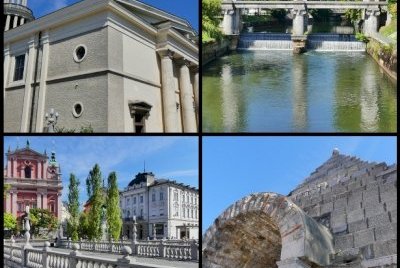
I visited this WHS in 2022. I parked my car in the really convenient indoor Center Parking just next to the famous Dragon Bridge after having visited the three locations which are away from the historic city centre, namely the Church of St Michael, the Zale Cemetery and the Church of St Francis. Hubert provided detailed information especially for these three buildings outside the city centre and overall I agree with his doubts about Otto Wagner's buildings in Vienna not specifically included on the WH list.
The four locations inside the historic city centre are easily covered on foot as a pleasant loop which I started from the Dragon Bridge and covered Market Hall, walking along the Promenade along the Embankments and Bridges of the Ljubljanica River. Most probably the most unique and iconic bridge is the Triple Bridge with the Franciscan Church of the Annunciation in the background. There are a number of interesting and beautiful Art Nouveau buildings which are not part of the WHS but worth viewing such as the coral red Cooperative Bank building, the People's Loan Bank, the Grand Hotel Union, the Galerija Emporium building, the Hauptmann House and the Municipal Savings Bank, to name but a few. Next I covered the Vegova Street and the National Library, one of Plecnik's iconic buildings, as well as the Trnovo Bridge.
In 14 AD the Romans founded a permanent civilian settlement along a picturesque river in the shadow of the Alps called Emona. Perhaps the …
Keep reading 0 comments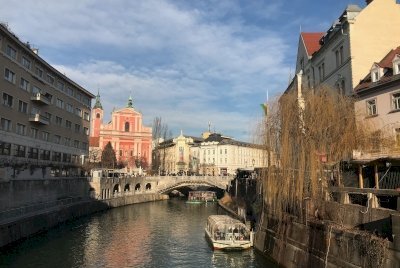
I visited Ljubljana after Christmas 2019 to spend New Years with friends who own an apartment in the city. Already then, before inscription, the town was overrun with tourists, mainly from Italy. Slovenia is not only a beautiful country but also cheaper then Italy to make a trip there attractive for Italians.
I am not sure how much of its attraction the city owns to Plečnik. Perhaps the generosity of open spaces in the center may his main merit. His buildings with the pyramids and columns do not necessarily blend well with the medieval and baroque architecture of the city center, they seem often a bit inserted into the surrounding buildings as if they were taken from another city and placed here. The most interesting place was for me the Plečnik museum where you get access to his home and workspace and you get information about his buildings and, almost more interesting, into projects, mainly for Ljubljana, that were never realized like a HUGE stair case that should lead from that city to the castle and a big pyramid like building for the Slovenian parliament that should get around 200 meters high. Those buildings would have the townscape much more then the existing buildings do.
'I find the title of the nomination very odd since "timeless" is certainly not the main characteristic for Plečnik's architecture. His stylized Neoclassizism leans on the Greek and Roman classic architecture but that doesn't make it timeless. In the opposite, it feels rather …
Keep reading 0 comments
I have already expressed my enthusiasm towards Plečnik´s designs in Ljubljana in my previous review. Now, one week before the ultimate verdict of the UNESCO committee (July 2021), I would like to comment the omitting of The Church of the Most Sacred Heart of Our Lord in Prague from the original nomination and compare it to the Church of St. Francis in Ljubljana, which has been added to the nomination quite recently. (PHOTO - LEFT: Ljubljana church exterior from East and interior towards East, RIGHT: Prague church exterior from East and interior towards East)
I live nearby the Plečnik´s church in Prague, and I am glad of it. The church is extremely monumental located in the middle of the square in rich/posh neighborhood Vinohrady (it means vineyards in English). Its visual impact to the square and the adjacent streets is iconic. The exterior is unusual with the contrast between brown bricks and grey elements. The focal point of the church is its huge, rather flat tower with a giant round window with clocks. The interior is simple and vast. IMO it is the best example of sacral architecture of the first half of 20thC in Czechia.
The church in rather poor and unassuming suburb of Ljubljana called Šiška, built for Friar Minors, is the modest variant of the church in Prague. They share several elements such as one monumental tower in the eastern part, central rectangular interior, using of pyramids around the tower, etc. But the different budget …
Keep reading 0 comments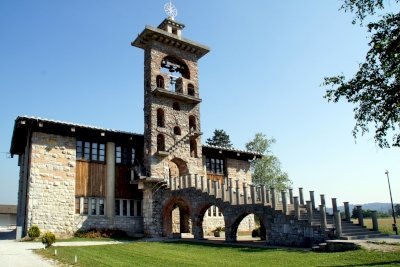
When the Advisory Body Evaluations (ABE) of the 2020/2021 nominations were published a few weeks prior to the WHC meeting, I was surprised to see that Ljubljana received a clear positive recommendation from the ICOMOS experts. According to the ABE, inscription is justified because the architecture of Jože Plečnik transformed a provincial town of the former Austro-Hungarian Empire into a modern and prestigious capital.However, ICOMOS also had some concerns. They considered that the proposed criterion (i) (a masterpiece of human creative genius) was not met. Thus, Ljubljana is very likely to be inscribed only under criterion (iv) (example of a type of building, architectural or technological ensemble or landscape which illustrates a significant stage in human history). The name of the site also changed, from the rather epic "The timeless, humanistic architecture of Jože Plečnik" to "The works of Jože Plečnik in Ljubljana - Human Centred Urban Design". Not much of a difference, if you ask me. Still the name Jože Plečnik is included in the title of the WHS, which places Plečnik in a category with the Gaudi, Le Corbusier, Frank Llyod Wright and Victor Horta. And that, in my opinion, is not justified.
The topic of this WHS is urban planning and design. One would therefore expect a contiguous core zone in the city centre, illustrating the connections between historic structures and new or renewed components. But it is nominated as a serial site with seven locations, some of which are in the outskirts …
Keep reading 0 comments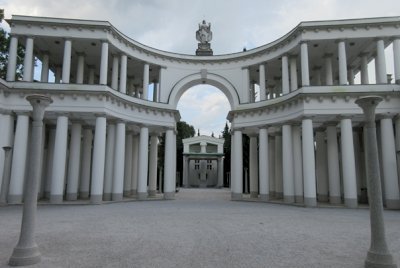
The work of Jože Plečnik emanates a special spirit for me, though I am not able to exactly explain what it is and why it is so. I know his work already from Prague as he was the major architect of the first president of Czechoslovakia in 20s-30s of 20th century and reshaped the Prague Castle. Therefore, some of his projects and buildings are parts of WHS Prague. His church built for Prague neighborhood Vinohrady was originally the component of this nomination with Ljubljana, but it has changed after bilateral negotiations and advice of ICOMOS. Now, only several buildings, bridges, squares and one church in Ljubljana are proposed.
Plečnik was active from the break of 19/20th century as a pupil of Otto Wagner in Wiena. After WWI, his work (as well as his personality) radically changed. Thus, his style was no more Art Nouveau, but turned into a weird variation of neoclassicism and autochthonic modernism, and he was active till 50s of 20th century. Plečnik did not like functionalism and architecture with the function at all, which was no architecture in his opinion. He was influenced by theories of architects like Semper (Dresden opera) and Palladio (Vicenza). According him, real architecture should be timeless, beyond function, and it should consist of symbols recognizable for common people - therefore we can find the symbols of ancient Rome, Egypt and Etruscan era in his work (pyramids and columns everywhere). Plečnik was very, almost extremely, spiritual, ascetic and of humanistic nature. He …
Keep reading 0 comments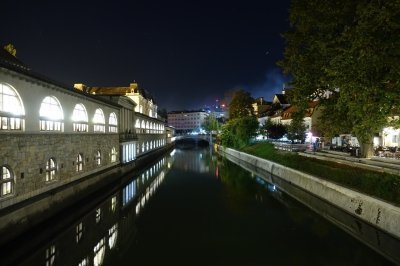
After the First World War a first version of Yugoslawia was formed consisting of Croatia, Serbia and Slovenia. As a consequence the importance of Ljubljana grew as it became a regional capital. To reflect the growing importance and to create a distinct national identity in their capital they asked Jože Plečnik to remodel the city.
Jože Plečnik was a successful architect, having made himself a name in Vienna and Prague. In Vienna he was a figure of the Vienna Secession movement . In Prague he redesigned the Prague Castle.
He applied his ideas to the center of Ljubljana. The most notable structure to me were the river banks he constructed.
If you have ever been in Ljubljana you will have seen his work.
OUV
I am not sure that the narrative of the great Jože Plečnik holds. Looking at his wikipedia page I can't shake the feeling that an enthusiastic Slovenian optimized his English page. The German page is far less enthusiastic. Looking only at his CV he seems to be primarily of regional importance.
The buildings I saw in Ljubljana are not ground breaking. Indeed they seem to be watered down Art Deco buildings, nice to look at but inconsequential and a bit late to the party.
The two most distinctive examples of his style are the Roman city gate with the pyramid on top and the Trnovo Bridge. They are not special or great or even unique. Comparisons to Antonin …
Keep reading 0 comments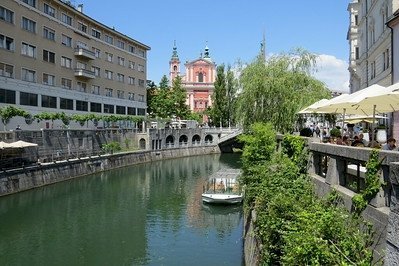
Slovenia’s Tentative List features The timeless, humanistic architecture of Jože Plečnik in Ljubljana and Prague. As the title already implies, this was meant to be a serial transnational nomination by Slovenia and Czechia. Last December however, after consulting ICOMOS, Slovenia decided to continue with the efforts alone: “the transnational bid was assessed as having little chance of success”. It is unclear yet whether they made the 1 February 2018 deadline for submitting the dossiers to be nominated for the WHC 2019, but we can safely assume that Slovenia will put this site forward within the next couple of years.
Jože Plečnik was a Slovene architect who made his most important works in the first half of the 20th century. He is nicknamed “the Gaudí of Ljubljana” for this architectural imprint on the city. I visited Ljubljana in 2014 after a few days checking out (T)WHS by rental car around Slovenia. This site wasn’t on the Tentative List at the time, so I had to revisit my photo archive of the day to see if I had visited (photographed) any of his buildings anyway.
The city is strong on Art Nouveau as well, and examples of that style stood out more to me in the streets of the Slovenian capital than the works of Plečnik. I spent most of my time at the embankment of the Ljubljanica River, an area in the city centre with lots of cafés and restaurants. This is already Plečnik Central. He was responsible for …
Keep reading 0 comments
